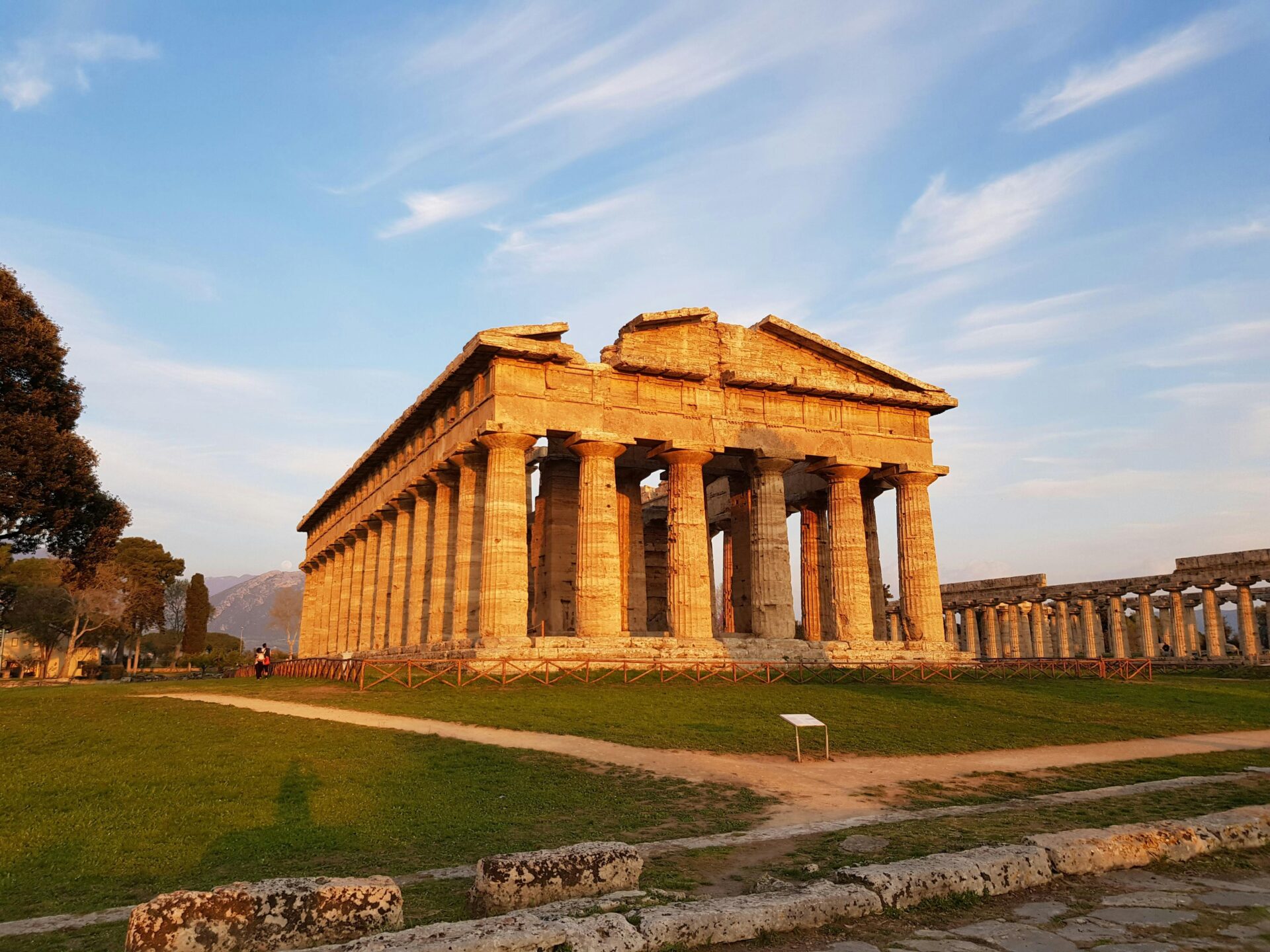Walking through the ancient site of Paestum in southern Italy honestly feels like stepping into a time machine. Just a couple of hours south of Naples, I stumbled across something most travelers miss—three of the best-preserved Greek temples anywhere.
These magnificent structures from the 6th and 5th centuries BCE stand in better shape than many temples in Greece itself. It’s a rare chance to see ancient architectural brilliance without the crowds you’d find at more famous sites.
The morning sunlight spills over the honey-colored limestone columns, and suddenly the place feels almost magical. I wandered among these UNESCO-protected treasures, amazed at how complete they remain.

Their massive Doric columns still hold up ancient pediments. You can spot architectural details here that have vanished from other Greek sites.
This hidden gem in Italy’s Campania region tells the story of Magna Graecia, when Greek colonists settled southern Italy. I found myself alone with history for long stretches, snapping photos without random tourists in the background.
I soaked in the peaceful energy of a spot where time seems to stand still. Despite its grandeur, the site feels surprisingly intimate, letting you connect with ancient wonders in a way that busier archaeological parks just can’t offer.
The Story of Paestum: From Poseidonia to UNESCO World Heritage Site
Paestum’s story stretches back over 2,600 years. It started as a Greek coastal settlement and eventually became one of Italy’s most treasured archaeological wonders.
The site’s incredible preservation gives us a rare peek into ancient life.
Origins as a Greek Colony
Around 600 BCE, Greek settlers from Sybaris founded a new colony along the southern Italian coast. They called it Poseidonia, honoring Poseidon, god of the sea.
This spot gave them access to fertile land and important trade routes. I was amazed to learn that they started building temples almost immediately.
The city flourished as part of Magna Graecia, that web of Greek colonies scattered across southern Italy and Sicily. The temples used the Doric style—massive columns, strong, simple lines.
It’s honestly wild how these structures survived while so many others from the same era have collapsed.
Transition to a Roman Colony
In 273 BCE, after the Pyrrhic War, the Romans took over Poseidonia and renamed it Paestum. They transformed it into a Roman settlement, marking a big change in the city’s identity.
The Romans changed the city layout dramatically. They built a forum, an amphitheater, and laid out streets in the typical Roman grid.
Despite all the new construction, the Romans left the Greek temples standing. They respected and preserved them.
This blend of Greek and Roman elements makes Paestum stand out. I find it fascinating how you can actually see this cultural transition in the city’s architecture.
Rediscovery and Ongoing Archaeological Work
After the fall of the Roman Empire, Paestum faded into obscurity. Malaria and shifting coastlines led people to abandon it.
Vegetation swallowed the temples, hiding them for centuries. In the 18th century, early archaeologists rediscovered Paestum.
The temples emerged, stunning visitors with their preservation. Artists and writers flocked to capture their beauty.
Today, archaeologists keep uncovering new sections of the city. When I visited, I watched teams at work, still finding fresh clues about daily life, art, and architecture in this place where Greek and Roman worlds collide.
UNESCO recognized Paestum as a World Heritage Site in 1998. Each year, new discoveries add to the story.
Greek Temples in Perfect Preservation: Icons of Ancient Architecture
Paestum shows off some of the best-preserved Greek temples outside Greece. These ancient structures give us a rare look at the architectural genius of Greek civilization.
Their massive columns and perfect proportions still stand, thousands of years later.
The Temple of Hera I and the Basilica
The Temple of Hera I—sometimes called the Basilica (though that’s not really accurate)—is the oldest temple at Paestum, from around 550 BCE. I was struck by its quirky design: nine columns across the front, not the usual even number.
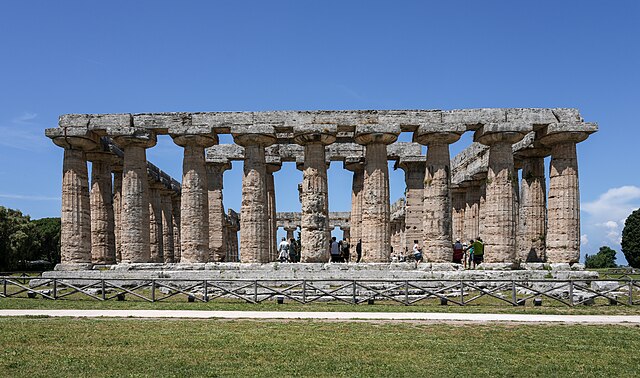
Image Source: Wikimedia Commons
Walking around, I noticed the columns bulge in the middle. This creates a visual effect that makes them look like they’re really bearing weight.
This trick, called entasis, shows how clever Greek architects were about visual perception. The limestone construction has stood up incredibly well over time.
Its 50 Doric columns create a stone forest. For a moment, I could almost imagine the place bustling with Greek colonists.
The Majestic Temple of Neptune
The Temple of Neptune (sometimes called the Second Temple of Hera) might just be the best-preserved Doric temple in the world. Built around 460-450 BCE, it’s a textbook example of Greek architectural harmony.
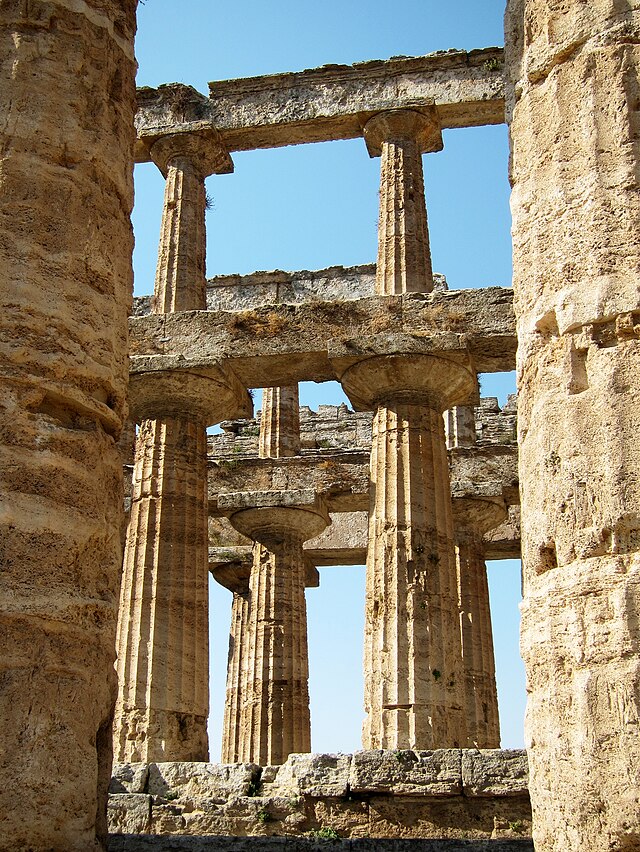
Image Source: Wikimedia Commons
When I first saw it, I just stopped in my tracks. The temple stretches about 60 by 24 meters, and its double row of columns and nearly complete structure make it easy to picture its original glory.
The temple features:
- 6 × 14 massive Doric columns
- Perfectly preserved pediments
- Nearly intact sanctuary walls
What really sets this temple apart is how much of it remains. Unlike so many ancient ruins, you can see almost the entire original design.
The stone glows golden at sunset, and honestly, it’s an unforgettable sight against the Italian sky.
The Temple of Athena and Its Artistic Legacy
The Temple of Athena (sometimes called the Ceres Temple) stands a bit apart from the other two main temples. Built around 500 BCE, it’s a great example of architectural styles in transition.
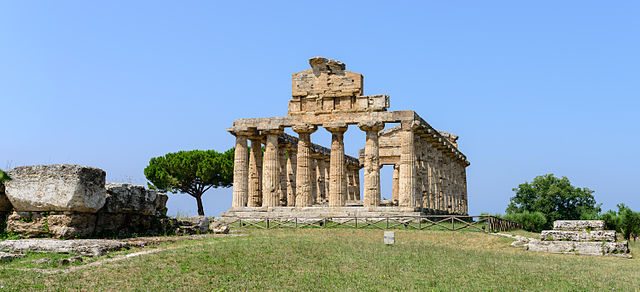
Image Source: Wikimedia Commons
I found this temple especially interesting because it blends Doric and early Ionic elements. The columns are more slender than usual, showing how styles evolved.
The temple once boasted colorful painted terracotta decorations. The colors have faded, but the archaeological museum displays some pieces that hint at how vibrant the temples once looked.
The temple’s position lets you take in sweeping views of the whole site. If you can, visit in late afternoon—the light creates dramatic shadows that really highlight the details.
Exploring Paestum’s Archaeological Site: What to See Beyond the Temples
The Doric temples grab all the attention, but Paestum’s archaeological site has a lot more to offer. If you wander beyond the famous temples, you’ll find layers of Greek and Roman civilization waiting to be explored.
The Forum and Roman Remains
The Forum formed the heart of Roman Paestum. I found this big rectangular space fascinating—it once buzzed with political, commercial, and social life.
Around the Forum, you’ll spot remains of public buildings that show off Roman ingenuity. The Comitium (assembly place) and Curia (senate house) remind us of the city’s political importance.

Image Source: Wikimedia Commons
The shops lining the Forum caught my eye. These small rectangular spaces give a real sense of daily Roman life.
Don’t skip the Gymnasium building. It probably served various civic purposes, and its structure shows how Roman life revolved around communal spaces.
Defensive Walls and Gates
Paestum’s ancient Greek walls are some of the best preserved in the Mediterranean. These fortifications stretch nearly three miles around the city and reach up to 15 feet high in places.
The four main gates, set at cardinal points, really impressed me. The Porta Marina (Sea Gate) on the west side has a unique curved design meant to confuse attackers.
Walking along these walls, I got a real sense of the city’s strategic value. The Greeks built them in the 4th century BC, and the Romans later reinforced them.
Square and circular towers dot the walls at intervals. These towers gave defenders a clear view of anyone approaching.
The Amphitheatre and Thermal Baths
Paestum’s amphitheatre is smaller than the Colosseum, but it offers a cool glimpse into Roman entertainment culture. Standing in the oval arena, I could almost hear the cheers of ancient crowds.

Image Source: Wikimedia Commons
The Romans built the amphitheatre to seat about 5,000 people for gladiator contests and public shows. Its spot near the northern walls made it easy for visitors to reach from outside the city.
The thermal baths complex shows how important bathing was in Roman society. I enjoyed picking out the different rooms: frigidarium (cold bath), tepidarium (warm bath), and caldarium (hot bath).
Look for the remains of the hypocaust heating system under the floors—ingenious Roman engineering at work. The baths weren’t just for cleaning up; they were social hubs, too.
Paestum’s Hidden Treasures: Artifacts, Frescoes, and the Archaeological Museum
Paestum’s temples steal the show, but the site also holds incredible artifacts and art that reveal even more about ancient life. The Archaeological Museum keeps these treasures safe and lets visitors connect with the people who once lived here.
Metopes and Decorative Reliefs
The metopes of Paestum are some of the most impressive I’ve seen in Greek architecture. These square panels once decorated temple friezes, packed with mythological scenes and heroic tales.
Inside the museum, I stopped in front of the famous “Hera Temple” metopes showing Heracles’s twelve labors. The detail is stunning—some even keep traces of their original paint, hinting at how colorful these temples were.
The reliefs also reflect a blend of Greek and local styles. This mix makes Paestum’s decorations stand out from those in mainland Greece.
Ancient Statues and Pottery
Paestum’s pottery collection tells stories of daily life and religious rituals. Black and red-figure vases show banquets, athletic contests, and mythological scenes that bring ancient society to life.
I spent ages admiring the kraters (mixing bowls) and amphorae with their intricate paintings. Many pieces mix local and Greek artistic styles, showing how cultures blended here.
The statues are just as striking. Terra-cotta votives and marble sculptures range from tiny household gods to life-sized figures.
The “Tomb of the Diver” fresco panels are the true stars—rare examples of Greek painting that survived all these years.
The Archaeological Museum Experience
The Archaeological Museum of Paestum gives you an up-close look at ancient artifacts, displayed in themed galleries. Unlike huge museums where treasures can overwhelm you, here you can really focus on each piece.
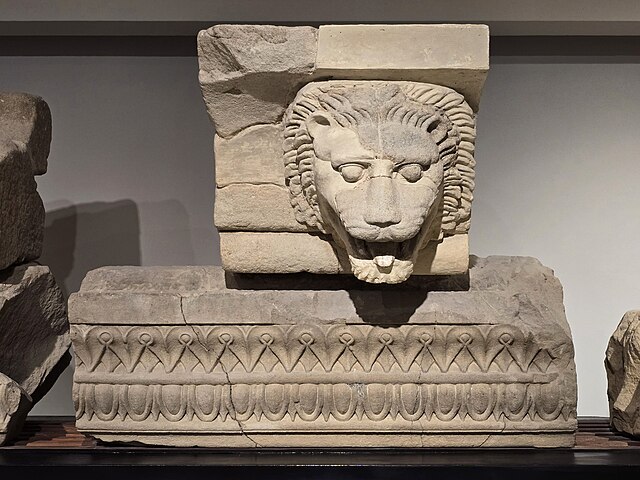
Image Source: Wikimedia Commons
Interactive displays explain how archaeologists excavate and preserve these finds. The museum even has a reconstruction of the “Tomb of the Diver,” so you can see it in its original context.
I suggest visiting the museum before heading into the archaeological park. It adds valuable context and makes the site even more meaningful.
The museum shop sells quality replicas of Paestum’s famous artifacts—honestly, not a bad souvenir if you want to remember your trip.
Tips for Visiting Paestum: Practical Insights and Unforgettable Experiences
Visiting Paestum is a rare chance to see Greek architecture outside Greece. I’ve picked up a few tips from my own trips to help you get the most out of this UNESCO World Heritage Site.
Getting Tickets and Guided Tours
Paestum’s archaeological park opens daily, and tickets cost about €12 for adults. I’d recommend buying tickets online ahead of time, especially in summer when lines can get long.
A guided tour is totally worth it. On my last visit, our guide made the stones come alive with stories about Greek settlers and life in Magna Graecia.
Tours usually cost €15-25 per person and last around two hours. For the best deal, get the combined ticket for the site and the museum.
The museum’s artifacts are incredible, especially the Tomb of the Diver fresco. If you prefer exploring solo, self-guided audio tours are available in several languages.
Day Trips from Naples, Pompeii, and the Amalfi Coast
Paestum makes a perfect day trip from lots of popular spots. From Naples, I hopped on an early train—about 1.5 hours each way.
If you’re visiting Pompeii, think about adding Paestum to your plans. The contrast between the Roman and Greek ruins is fascinating.
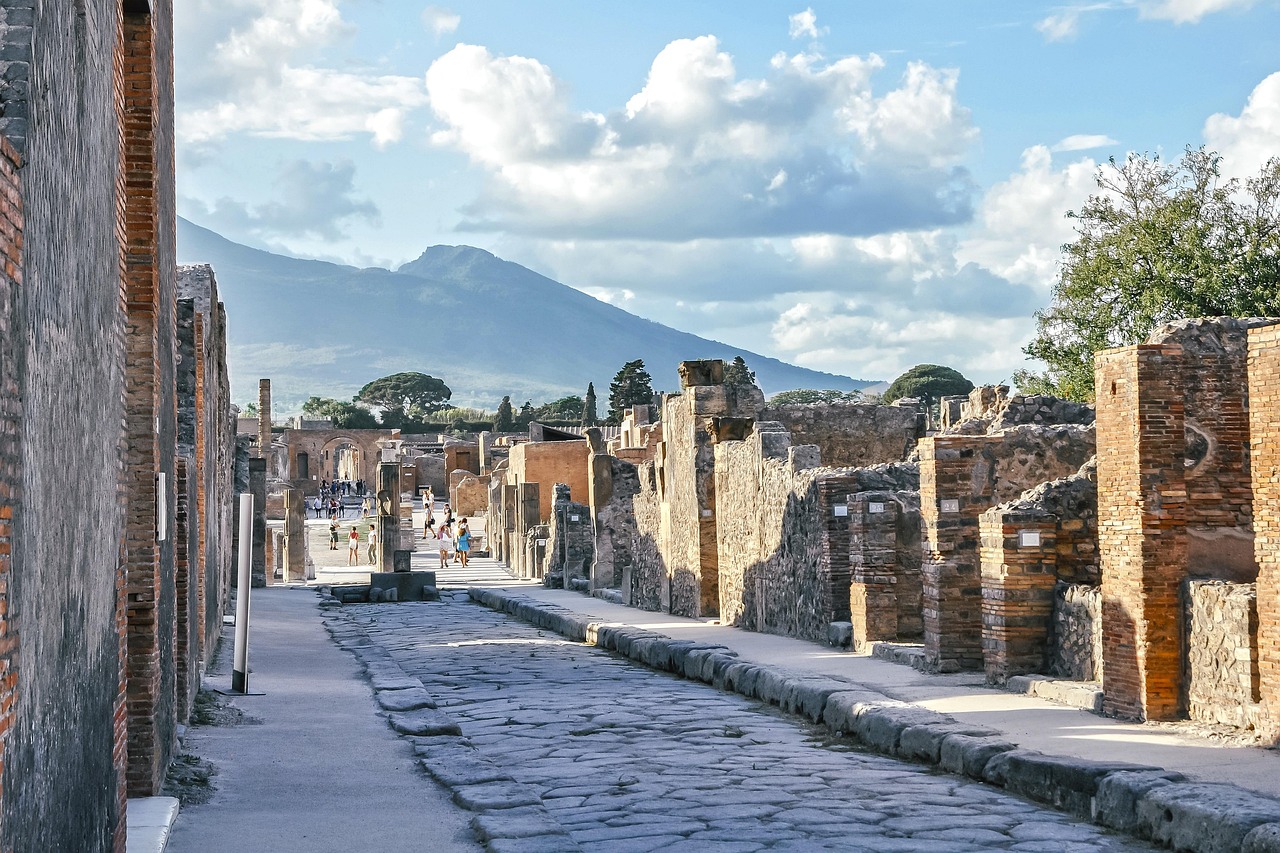
Many tour companies offer combined day trips. From the Amalfi Coast, you’re looking at a 1-2 hour drive, depending on where you start.
I rented a car in Salerno for flexibility, but public transport is doable:
- Train: Regional trains run from Naples or Salerno
- Bus: CSTP buses connect from coastal towns
- Organized tours: Plenty of companies offer full-day trips with transport included
Nearby Attractions: Castellabate, Buffalo Mozzarella, and Cilento
The Cilento region around Paestum is full of worthwhile detours. I spent an afternoon in Castellabate, a medieval hill town with jaw-dropping views—featured in the Italian film “Welcome to the South.”
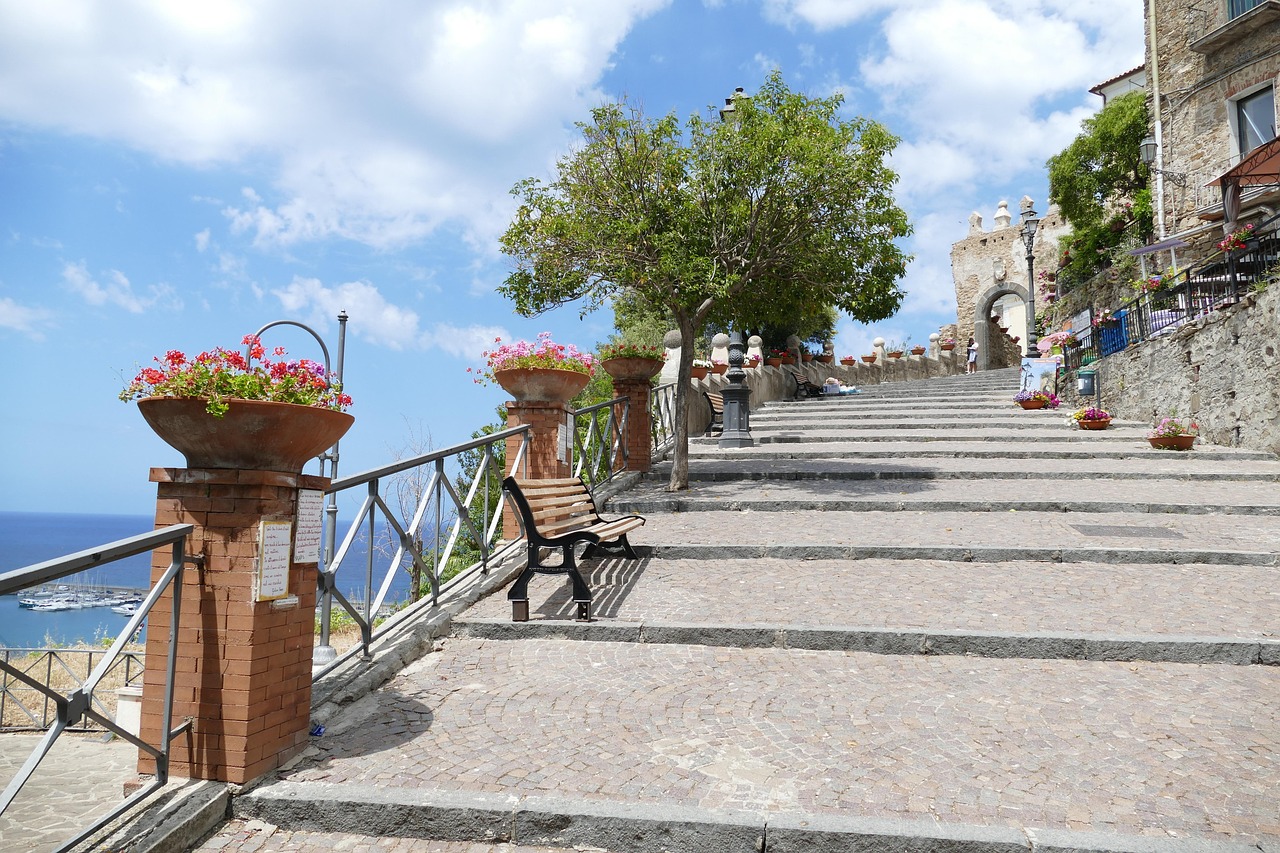
You’ve got to try buffalo mozzarella from a local farm. I toured Tenuta Vannulo, watched the cheese being made, and tasted the freshest mozzarella of my life.
Cilento National Park’s beaches are less crowded than those on the Amalfi Coast but just as beautiful. I loved the golden sands at Paestum beach, only a short walk from the ruins.
Local food specialties to try:
- Buffalo mozzarella
- Cilento olive oil
- White figs
- Artichokes, local style
Travel Essentials: Swimming, the Mediterranean Climate, and Local Culture
Paestum’s Mediterranean climate makes it pleasant most of the year. I found May and September ideal—comfortable temps and fewer crowds.
If you visit in summer, bring water and sun protection. Shade is scarce around the ruins.
Swimming at Paestum’s beaches is a fantastic way to cool off after exploring. The sea’s usually warm enough from May through October.
Watching the sunset over the temples from the beach? Pure magic. Local festivals add extra flavor to your trip.
If you can, time your visit for the Madonna del Granato festival in May or the buffalo mozzarella festival in September.
Packing essentials:
- Comfy walking shoes
- Sun hat and sunscreen
- Water bottle
- Light layers for the evenings
- Camera (trust me, sunrise and sunset shots of the temples are unreal)

